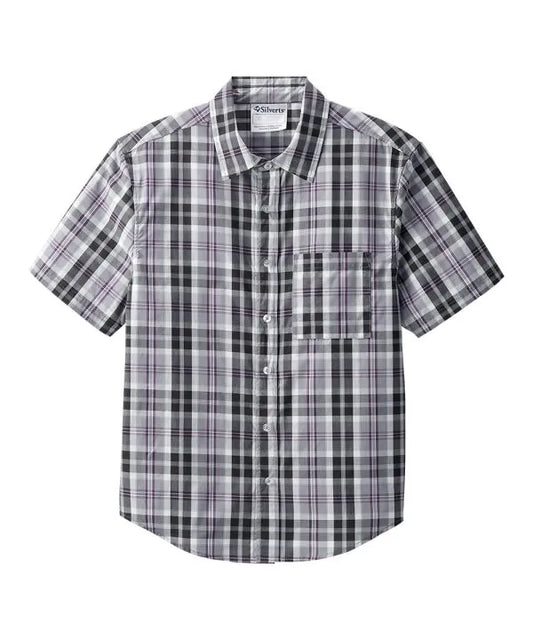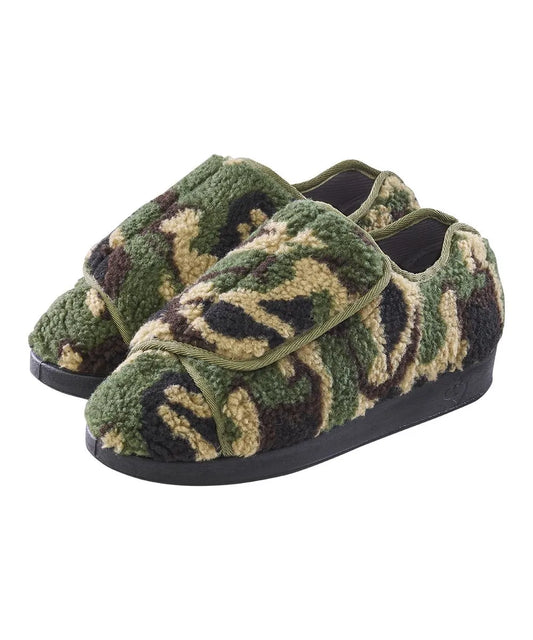By: Qasem Gilani
Getting dressed is something many do without thought. However, for someone living with Parkinson’s, it can feel like a test of patience and control every single morning. The act of buttoning a shirt or pulling up a zipper, things most people do without thinking, can take serious effort. Tremors, stiffness, and hands that just won’t cooperate turn an easy task into a small battle. It’s tiring. And honestly, it can eat away at a person’s confidence too.
That’s why adaptive clothing matters so much. It’s not only about convenience, it’s about comfort, dignity, and keeping a sense of normalcy. Adaptive designs give people more control over how they look and feel, even when mobility changes. Whether you’re dressing for work, a medical visit, or a lunch with friends, adaptive fashion helps you get ready without frustration. You look good, feel good, and save energy for what actually matters.
This article walks through what makes adaptive clothing helpful for people living with Parkinson’s, what features to look for, and how brands like June Adaptive are making it easier to dress independently without giving up style or confidence.
Understanding the Dressing Challenges of Parkinson’s Disease
Parkinson’s disease changes how muscles respond and how the body moves. The nervous system becomes unpredictable. Tremors, rigidity, and slow reactions make it hard to control small movements. Something as tiny as fastening a button or pulling up socks can take minutes, not seconds.
Imagine trying to thread a needle while your hands shake. That’s what fastening buttons can feel like. Or trying to lift your arms into a tight sweater when your shoulders refuse to cooperate. The struggle is real and exhausting.
Here are some of the most common dressing challenges people with Parkinson’s face:
- Tremors that make fine hand control difficult.
- Rigidity or stiffness that limits flexibility, especially in the arms, shoulders, and legs.
- Balance problems that make standing unsafe when trying to put on pants or shoes.
- Fatigue that makes even simple motions drain energy fast.
And then there’s the emotional side. Dressing independently gives a sense of control that illness often tries to take away. Losing that can feel discouraging. Adaptive clothing helps change that narrative by making every step of the process smoother. It restores choice, comfort, and self-reliance without making the wearer feel different.
How Adaptive Clothing Helps
Adaptive clothing reimagines regular garments so they’re easier to put on, more flexible, and safer to wear. Instead of fighting with tiny buttons, narrow necklines, or stiff fabric, adaptive clothes simplify the whole experience.
It’s not about medical looking outfits or oversized, shapeless designs either. Modern adaptive fashion blends everyday style with thoughtful features. The idea is simple, fit the clothes to the person, not the person to the clothes.
For people with Parkinson’s, that can mean less fine finger work, more stretch, and openings that don’t require twisting or balancing.
Key features include:
- Magnetic or Velcro closures instead of buttons or zippers.
- Wider necklines or side openings that are easier to slide into.
- Soft, stretchable fabrics that move naturally with the body.
- Options that work for caregivers too, like easy-access sleeves or pants.
- Non-slip shoes that improve stability.
Each adjustment removes one obstacle. Together, they make daily life smoother, faster, and more independent.
Magnetic Closures: Style Meets Simplicity
Magnets changed the game. For anyone who struggles with shaky hands or stiff fingers, these tiny innovations make a massive difference. Instead of aiming tiny buttons into tiny holes, the magnets practically do the work for you. Bring the two sides close and click, they fasten themselves.
Men’s Denim Jacket with Magnetic Closures It looks just like a classic denim jacket, but the closure system is hidden magnets under the placket. The style stays cool and timeless, and the wearer gets to dress with ease.

Women’s Magnetic Zipper Active Jacket
A sporty choice that’s perfect for walks, errands, or therapy sessions. The magnetic zipper guide lines up automatically, so there’s no need to juggle both sides or get frustrated. It’s comfortable, lightweight, and flexible, made for movement.

Magnets aren’t just functional, they’re discreet and strong enough for daily use. They hold securely, survive washing machines, and help people get dressed in seconds instead of minutes. A small innovation with a big emotional payoff.
Velcro Fastenings: Comfort Without the Fuss
Velcro is another quiet hero of adaptive clothing. It might sound old school, but it’s incredibly practical. One hand, quick motion, done.
Women’s Soft Knit Pants with Easy Touch Closures
These pants replace traditional fastenings with soft Velcro tabs at the waist. No zippers to grip, no buttons to struggle with. They’re comfortable, adjustable, and ideal for people who experience swelling during the day.

Velcro works well for people who:
- Get tired quickly and want an easier dressing process.
- Have limited dexterity or use one hand more than the other.
- Need frequent clothing adjustments for comfort or medical access.
The best Velcro clothing feels smooth and gentle, not scratchy. June Adaptive uses soft, durable materials that don’t snag on fabric or irritate skin. It’s practical comfort done right.
Stretch Fabrics and Comfortable Fits
When stiffness and rigidity are constant, flexibility in clothing becomes a must. Stretch fabrics make a huge difference. They move with your body instead of fighting it. Cotton blends, jersey knits, or light spandex mixes are ideal, they keep structure but allow freedom.
Men’s Seated Stretch Cargo Pants with Elastic Waistband
Comfort meets function here. The elastic waistband makes dressing easier, especially when sitting. Perfect for daily wear or travel.

Unisex Recovery Pants with Side Zippers
These pants are made for accessibility. The zippers along the sides allow dressing without standing, helping both wearers and caregivers.

Stretchy fabrics aren’t just about movement. They reduce pressure points, prevent overheating, and add a relaxed fit that still looks polished. Add in flat seams or tag-free designs, and irritation becomes a thing of the past.
Sometimes, the difference between frustration and comfort really is in the fabric.
Footwear That Supports Stability and Independence
Shoes are a bigger part of independence than most people realize. Balance and mobility start at your feet, and Parkinson’s can make both unpredictable. Adaptive shoes focus on support, safety, and ease of use.
When shopping for adaptive footwear, here’s what to keep in mind:
- Non-slip soles for secure footing.
- Lightweight materials to reduce fatigue.
- Front or back zippers for easier entry.
- Memory foam or cushioned insoles for all-day comfort.
Women’s Wide Easy Slip-On Sneakers Without Laces
No tying, no adjusting. The elastic panels flex naturally with your movements, making them perfect for everyday use.

Footwear like this helps reduce fall risks and gives a confidence boost. You feel more stable, more secure, and ready to move.
Adaptive Undergarments and Layers
Undergarments are easy to overlook, but they’re often where comfort begins. If dressing starts off frustrating, the whole day can feel harder.
Front-Closure Adaptive Bra
This piece solves a real problem. It fastens in the front, so no more twisting or reaching over your shoulder. It’s comfortable, supportive, and allows for independent dressing.

Layering is another area where adaptive design shines. Lightweight jackets, cardigans, or sweaters with magnetic or Velcro fastenings make temperature changes easier to manage, no struggling to pull something overhead or off your shoulders.
These small changes save time, energy, and frustration.
Tips for Dressing with Parkinson’s
Adaptive fashion helps, but small daily habits can make a big difference too.
- Dress while seated. Use a sturdy chair with armrests for safety and support.
- Start with your weaker side. It makes sliding into clothing easier.
- Prepare outfits ahead of time. Laying clothes out the night before saves precious energy.
- Opt for slip-on or stretchy clothing. Skip tiny fastenings when possible.
- Give yourself time. No need to rush, slow and steady keeps things safe.
- Keep your dressing area clear. Good lighting, non-slip rugs, and uncluttered spaces reduce risks.
Adding these steps into your routine creates smoother mornings and helps maintain independence.
The Emotional Power of Adaptive Fashion
Clothing is personal. It’s how we express who we are. For people living with Parkinson’s, regaining the ability to dress independently isn’t just a convenience, it’s an emotional victory. It’s confidence stitched into fabric.
Adaptive clothing gives that sense of control back. It says, you can still do this. For many, that means a better mood, more social comfort, and even improved motivation throughout the day.
June Adaptive takes that idea seriously. Every product reflects dignity, inclusion, and self-expression. From hidden magnetic closures to soft stretch materials, each design reminds people that accessibility and fashion can live in the same space.
Feeling like yourself again, that’s powerful.
Final Thoughts
Living with Parkinson’s can make daily routines harder than they should be. But getting dressed doesn’t have to be another challenge. Adaptive fashion helps people reclaim independence, save time, and feel good about what they wear.
From magnetic shirts to slip-on sneakers, these thoughtful designs turn dressing into something empowering again. Every feature exists for a reason, to bring ease, safety, and comfort back into everyday life.
Fashion should include everyone. With adaptive clothing, it does. It lets people move freely, express personality, and feel confident without compromise.
If you or someone close to you is living with Parkinson’s, check out JuneAdaptive.com to explore their full range of adaptive styles designed for comfort, independence, and confidence.
You can also subscribe to the June Adaptive newsletter to get new product updates, recovery resources, and practical style advice delivered right to your inbox.
Dress how you want. Move how you can. Feel like yourself every day.
Empower yourself each morning, one outfit at a time.















